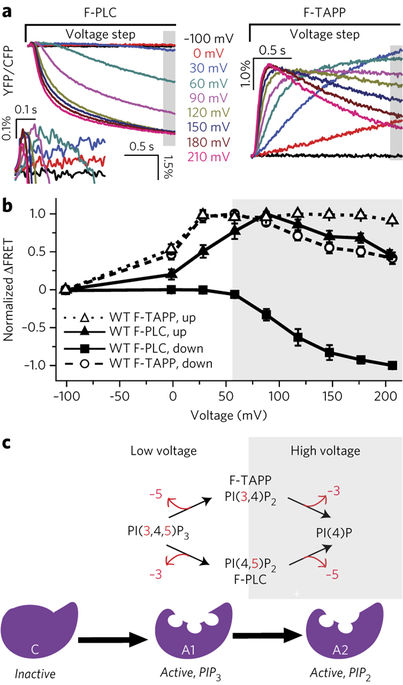
Allosteric substrate switching in a voltage-sensing lipid phosphatase
Abstract
Allostery provides a critical control over enzyme activity, biasing the catalytic site between inactive and active states. We found that the Ciona intestinalis voltage-sensing phosphatase (Ci-VSP), which modifies phosphoinositide signaling lipids (PIPs), has not one but two sequential active states with distinct substrate specificities, whose occupancy is allosterically controlled by sequential conformations of the voltage-sensing domain (VSD). Using fast fluorescence resonance energy transfer (FRET) reporters of PIPs to monitor enzyme activity and voltage-clamp fluorometry to monitor conformational changes in the VSD, we found that Ci-VSP switches from inactive to a PIP3-preferring active state when the VSD undergoes an initial voltage-sensing motion and then into a second PIP2-preferring active state when the VSD activates fully. This two-step allosteric control over a dual-specificity enzyme enables voltage to shape PIP concentrations in time, and provides a mechanism for the complex modulation of PIP-regulated ion channels, transporters, cell motility, endocytosis and exocytosis.